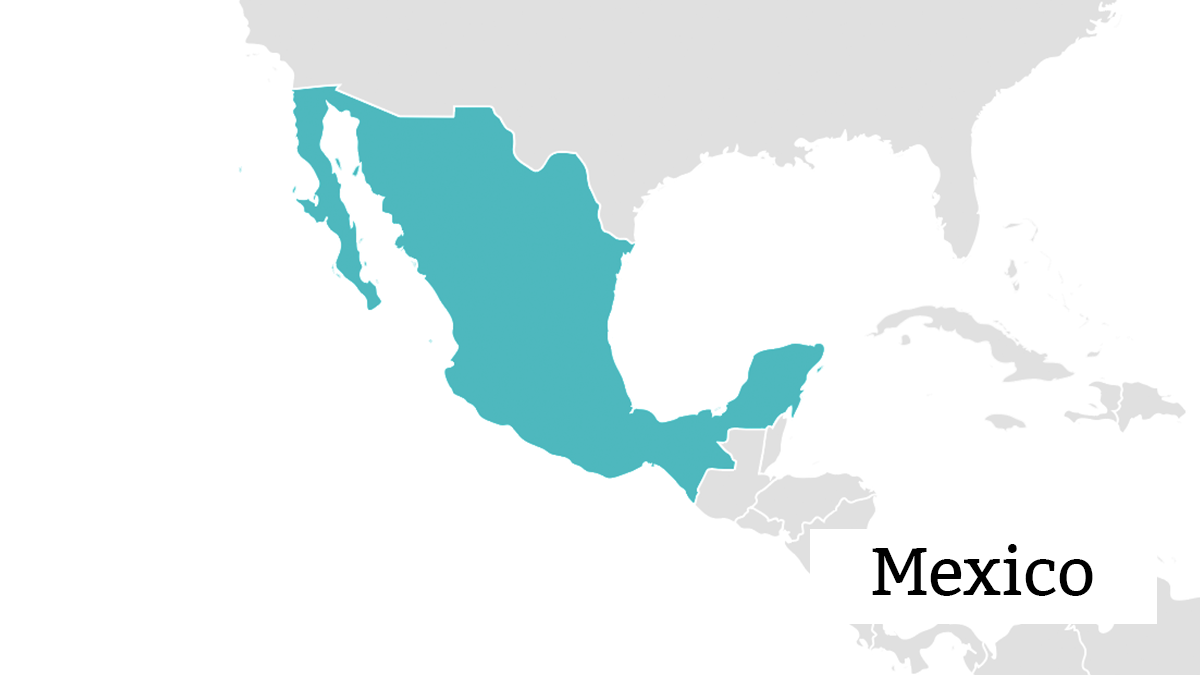
Among OECD members, Mexico has the lowest GDP per capita and a highly inequitable distribution of income. Many of those with below average incomes are also indigenous and living in rural areas, creating a racial and geographic gap that mimics the income gap between the rich and the poor. In the past, Mexico’s telecommunications sector has been described as “anemic” due to a lack of necessary reforms that could expand transparency in the sector and help bring ICT services to people living outside of urban areas.
The lack of competition in telecommunications has been a major barrier to fixed-line development and uptake in Mexico and has also driven the urban-rural divide in the typically more robust area of mobile telephony. The dominance of a few players has been instrumental in the digital exclusion of potentially millions of Mexicans, and competition policy reforms and other measures taken to address these circumstances have not always been effectively applied.
The government has instituted programs to bridge the urban-rural population divide in terms of access and connectivity. However, similar to competition reform, these have been unsuccessful in delivering expected results. The implementation of “e-Mexico” in 2001, with a USD$400 million budget, did not effectively reach the places that were most remote and inaccessible because there was no nationwide distribution of telecommunications infrastructure or human resources with the skills needed to manage the initiative effectively in these hard-to-reach places.
All of these aforementioned factors have resulted in a situation where, in 2005, analyses showed that Mexico consistently underperformed in multiple key sector indicators (internet utilization rate, mobile penetration, etc.) when compared to other nations with similar GDP per capita. Moreover, by 2014, alongside most of its rural population, three quarters of Mexico’s urban population remained offline, largely due to issues with affordability.
Yet, the country has also consistently made progress in connecting its population to the internet and mobile telephony in particular. Despite the comparable lack of market competition, liberalization helped lower prices for mobile services by over 50% between 2008 and 2009, and the country’s ITU ranking for access to telecommunications services jumped 27 places in the same period. Ever since, competition has slowly increased and smaller operators are working aggressively to gain customers from the dominant players by lowering prices and offering innovative services to reach customers.
In 2012, the leaders of Mexico’s three main political parties collectively signed a political instrument named the “Pact for Mexico.” The agreement was undertaken to further reforms in telecommunications by committing to democratizing citizen participation and working to reduce inequalities that prevent people from exercising their social rights. This led to action by the government of former president Enrique Peña Nieto in 2013 to develop and implement new telecommunications sector reforms that aimed to release the stranglehold of an essentially monopolistic player in order to better promote competition that would benefit Mexican citizens.
The Federal Telecommunications and Broadcasting Law of 2014 emerged from the constitutional reforms announced in 2013. The law aimed to reshape telecommunications regulations on three points: opening up further competition, offering better services to customers at prices they can afford, and providing more rights for consumers. It also introduced a “social use” concession in spectrum assignments, reserved for the purposes of community, education, culture or science.
The regulator, Instituto Federal de Telecomunicaciones (IFT), released its “Annual Program for the Use and Exploitation of Frequency 2015” the following year. This document shares the analysis of findings from spectrum assignments in the 850MHz band and determined that there was some spectrum that remained unused yet was too small to be sold off to profit-oriented telecoms operators. The regulator then made this spectrum available to companies and community groups, particularly in regions with low teledensity, so that they could extend access to people who were underserved. The spectrum portions included 2 x 5MHZ in seven underserved regions and 2 x 2.54MHz in a different region, with both coming from the 850MHz band. This social use concession spectrum could only be used to serve areas of Mexico where fewer than 2,500 people live, and the government reserved the right to re-assign the spectrum in the future if needed as a licensing condition.
The telecommunications law of 2014 resulted in IFT granting an experimental concession of spectrum for social use to community organisation Rhizomatica in that same year. Rhizomatica had successfully lobbied the government for the social use of spectrum and worked with communities to deploy open source technology to democratize their access to mobile telephony.
The success of this trial led to Indigenous Communities Telecommunications (TIC) becoming the first company to be issued a permanent license linked to previously unassigned portions of spectrum in 2016. The NGO, which is also a social cooperative, gained its license to serve over 350 municipalities in five states that are among Mexico’s poorest. Immediately, prices fell substantially for customers: one woman shared her experience of paying 80 cents (USD) a minute to make calls to the US, where her husband is based. After TIC’s arrival, she paid the equivalent of 1 cent (USD) a minute to make calls to the US. Calls to other subscribers to the TIC network are free of charge. TIC now has approximately 3,350 active customers each day located in 63 communities in Oaxaca state. The 14 cellular sites that serve these communities are both owned and operated by them as well.
Suggested Citation: Alliance for Affordable Internet (2019). “Mexico: Planning spectrum for all communities.” Good Practices Database. Washington DC: Web Foundation.
